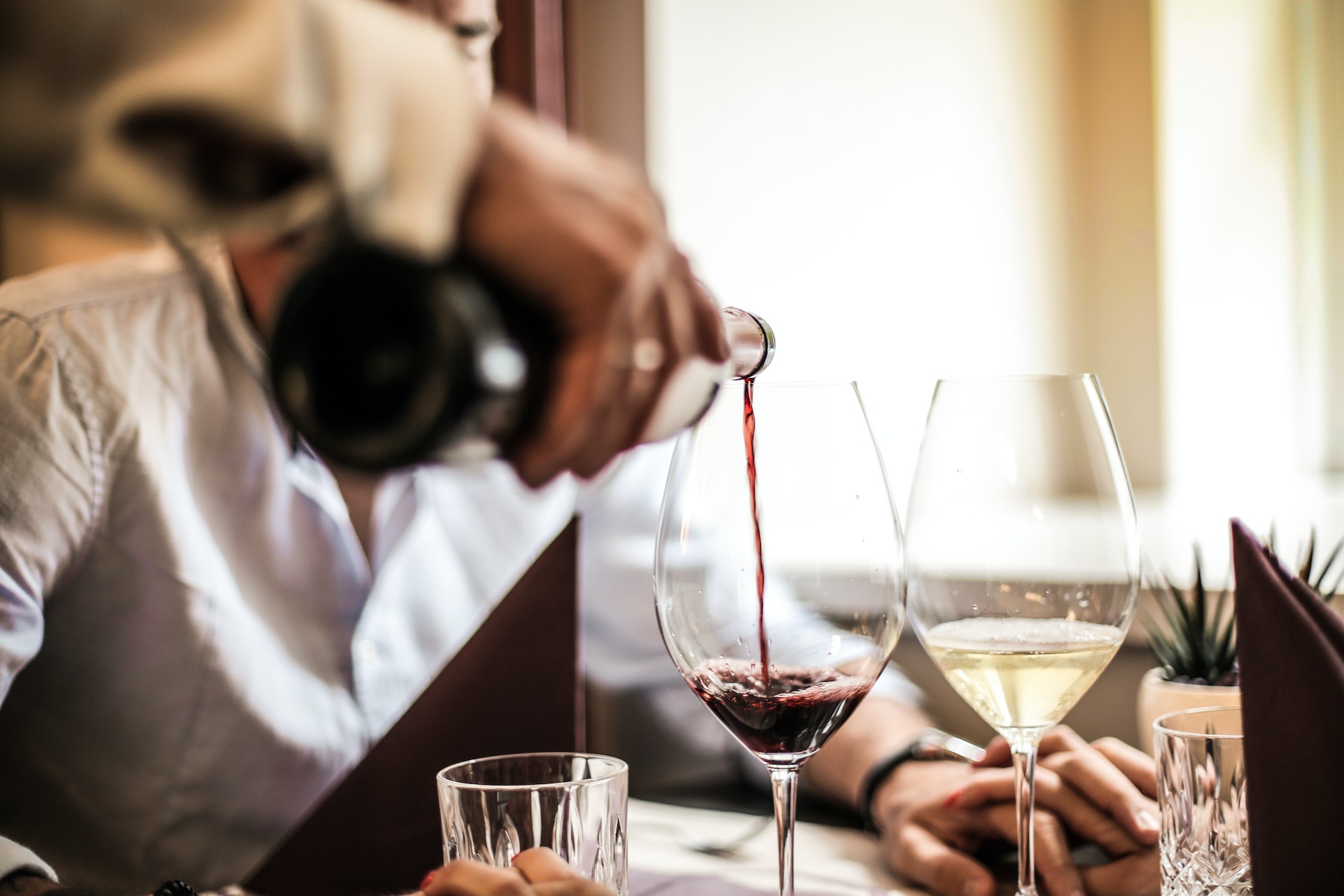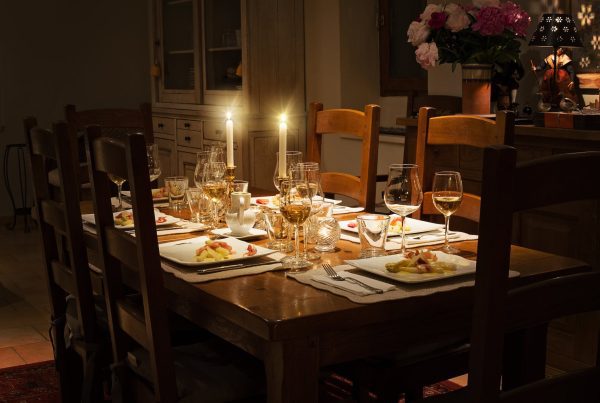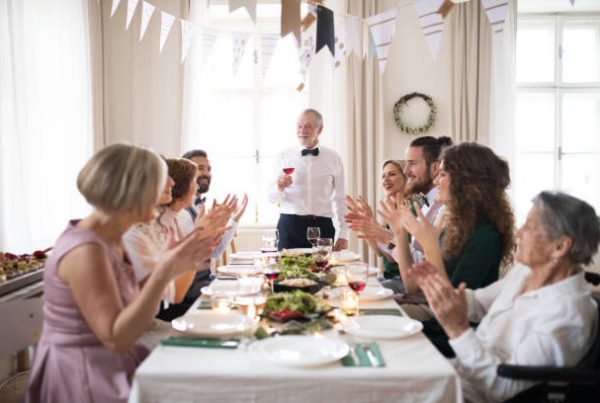Welcome to the art of wine selection for dinner parties, a skill that can elevate any gathering. If you’re stuck for what to take to your next gathering, this guide, crafted by Private Chef Direct, will help you navigate through the myriad of choices to find the perfect bottle.
From understanding the basics of wine types to pairing with the menu, this article is your go-to resource for impressing guests with your impeccable wine choice.

Understanding the Basics of Wine Pairing for Dinner Parties
- Introduction to Wine Types: Wine comes in various forms – red wine, white wine, sparkling wine, and dessert wine. Each has unique characteristics suited for different occasions and meals.
- Considering the Dinner Menu: The key to selecting the perfect wine is to consider what’s on the menu. A general rule is to match the wine’s body with the weight of the food – lighter wines for lighter dishes, and fuller-bodied wines for heartier meals.
The Elegance of Sparkling Wines: When to Bring Bubbly
- Versatility of Sparkling Wines: Sparkling wine, like champagne or cava, isn’t just for celebrations. Its high acidity and bubbles make it a versatile choice, pairing well with a variety of dishes.
- Ideal Scenarios: Sparkling wines are perfect as an aperitif or with appetisers. They’re excellent with seafood, salty foods, and can even complement lighter style main courses.
The Charm of Chardonnay: A Safe Bet for Most Occasions
- Characteristics: Chardonnay, one of the most popular white wines, is known for its medium to full body, moderate acidity, and flavours that can range from apple and lemon to tropical fruit and vanilla, depending on how it’s made.
- Food Pairings: It pairs beautifully with dishes like roast chicken, seafood, and creamier pasta dishes. Chardonnay’s versatility makes it a safe and impressive choice for any dinner party.

Pinot Noir: A Red Wine That Delights
- Overview and Flavor Profile: Pinot Noir, a red wine favourite, is loved for its lighter body and complex flavour profile, often featuring red fruits like cherries and raspberries. It’s a wine that can range from silky to robust.
- Ideal Pairings: Pinot Noir is excellent with dishes like grilled salmon, chicken, and even lighter red meat dishes. Its versatility in pairing makes it a go-to for hosts unsure of guests’ preferences.
Sauvignon Blanc: The Refreshing Choice for Light Dishes
- Taste and Acidity: Sauvignon Blanc, a popular white wine, is known for its crisp, dry profile and high acidity. It often showcases flavours like green apple, lime, and tropical fruits, making it a refreshing choice.
- Pairing Suggestions: This wine pairs wonderfully with lighter dishes, especially those featuring herbs or citrus. Think grilled fish, salads, and vegetarian dishes. Its acidity makes it a great palate cleanser between courses.
Riesling: The Sweet and Versatile Option
- Understanding Riesling: Riesling, a white wine, can range from sweet to very dry. It’s known for its strong floral aromas and apple, peach, or apricot flavours, with a notable high acidity that balances its sweetness.
- Complementary Foods: Riesling is incredibly food-friendly. Dry Riesling pairs well with light seafood or chicken, while sweeter versions can complement spicy Asian cuisine or serve as a delightful dessert wine.

Why Cabernet Sauvignon is a Dinner Party Staple
- Profile of Cabernet Sauvignon: This full-bodied red wine is a favourite for its rich flavours of black currant, plum, and often a hint of spice or oak. Cabernet Sauvignon’s robust nature makes it ideal for red meat dishes.
- Dishes to Serve: It’s the quintessential wine for steak or lamb, offering a balance to the richness of red meat. Hearty vegetarian dishes with mushrooms or lentils also pair well with its depth.
Exploring Italian Wines: Chianti Classico and Beyond
- Chianti Classico: Made primarily from the Sangiovese grape, Chianti Classico from Italy offers a balance of acidity and tannins, with flavours of cherry and earthy notes. It’s a versatile wine that complements a range of dishes.
- Other Italian Options: Italian wine varieties like Barolo, Brunello di Montalcino, and Amarone offer a delightful exploration of robust and complex flavours. These wines are great with Italian cuisine, especially dishes with tomato-based sauces or grilled meats.
Rosé: Not Just a Summer Wine
- Versatility of Rosé Wines: Often misunderstood as merely a summer sipper, rosés can range from dry to sweet and offer flavours from subtle earthy notes to bright berry and citrus.
- Food Pairings: Dry rosé is excellent with Mediterranean dishes, seafood, or light pasta. Sweeter rosés can accompany spicier cuisines or act as a refreshing counter to richer, creamy dishes.
Dessert Wines: The Perfect Finale to Your Dinner Party
- Overview of Dessert Wine Options: Dessert wines, like Sauternes, ice wines, or late-harvest Rieslings, offer a sweet finish to any meal. These wines are typically rich, with a higher sugar content and often notes of honey, nuts, and dried fruits.
- Pairing Dessert Wines: The key is to match the sweetness of the wine with the dessert. For example, a chocolate tart pairs beautifully with a full-bodied sweet red, while fruit desserts can be enhanced with a lighter, sweeter white wine.

Other Wines of Note for a Diverse Selection
When choosing wine to bring to a dinner party, it’s worth exploring beyond the usual suspects. The world of wine offers a rich tapestry of grape varieties and styles, each with its unique charm and potential to enhance your dining experience. Here’s a spotlight on some additional wines that deserve attention:
- Pinot Grigio and Albariño: These lighter white wines, known for their crisp minerality and citrus flavours, are fantastic with seafood and light pasta dishes.
- Fuller-Bodied Whites like Chardonnay and White Burgundy: For creamier or richer dishes, opt for a fuller-bodied white wine. A White Burgundy or a well-oaked Chardonnay brings complexity and depth to the table.
- Syrah and Rioja: If your guests like red wines with bold fruit flavours and a hint of spice, consider a Syrah or a Rioja. They pair well with grilled meats and robust vegetarian dishes.
- Burgundy and Barolo: For a special occasion, you might aim to spend a bit more on a classic like a Red Burgundy or a Barolo. These wines offer a complex and nuanced experience, ideal for enthusiasts.
- Exploring Vineyards and Terroirs: Wine lovers appreciate wines that showcase the unique terroir of their vineyards. Look for bottles labelled with specific regions or cru classifications, indicating a higher quality and more distinct flavour profile.
- Vintage Selections: Keep an eye on the vintage. A bottle from a notable year, might offer a unique experience. Winemakers often highlight the distinct characteristics of each year’s harvest.
- Domaine and Winemaker’s Craft: When choosing wine, consider the winemaker’s reputation and the domaines history. A reputable winemaker’s craft can turn an ordinary grape into an extraordinary bottle of wine.
This selection of wines, ranging from light and crisp to full-bodied and complex, ensures that you have options to cater to various preferences and dishes at your dinner party. Remember, the best bottle of wine is not just about the label or price; it’s about the experience it brings to your table.
Perfecting Your Dinner Party Wine Selection
As you prepare to bring wine to your next dinner party, remember that the perfect bottle can elevate the entire dining experience. Whether it’s a refreshing Sauvignon Blanc, a complex Pinot Noir, or a sweet Riesling, each type of wine offers something unique.
Consider the menu, the occasion, and your guests’ preferences when making your selection. From sparkling wines for a celebratory touch to full-bodied reds for hearty meals, the right choice lies in understanding the harmony between food and wine.
To ensure your selection of wines to serve at the dinner party is impeccable, here are key points to consider:
- Variety is Key: Include a mix of red and white wines, and consider adding a sparkling or sweet wine for diversity.
- Pairing with the Menu: Choose a wine that pairs well with the flavours of your dishes. Lighter wines for delicate flavours, fuller-bodied wines for richer meals.
- Consider Your Guests: Aim to include wines that cater to different tastes. A safe bet is to bring a bottle of a crowd-pleaser like Chardonnay or Pinot Noir.
- Don’t Overlook Lesser-Known Varieties: Explore wines made from grape varieties like Albariño or Verdicchio, or from renowned regions like Stellenbosch or Burgundy.
- Quality Over Quantity: It’s better to bring one bottle of a well-chosen wine than several of mediocre quality. Aim to spend a bit more for a memorable experience.
- Ask for Help: If you’re unsure, don’t hesitate to seek advice from a wine store expert. They can help you decide based on your needs and budget.
By keeping these tips in mind, you can confidently select a wine that not only complements the meal but also delights your guests, making your dinner party a memorable gastronomic event.
Enhance your next dinner party with a touch of gourmet excellence. Private Chef Direct offers the chance to have our expert chef Scott prepare an exquisite meal in your home, perfectly complementing your wine selection. Elevate your gathering into an unforgettable dining experience.




